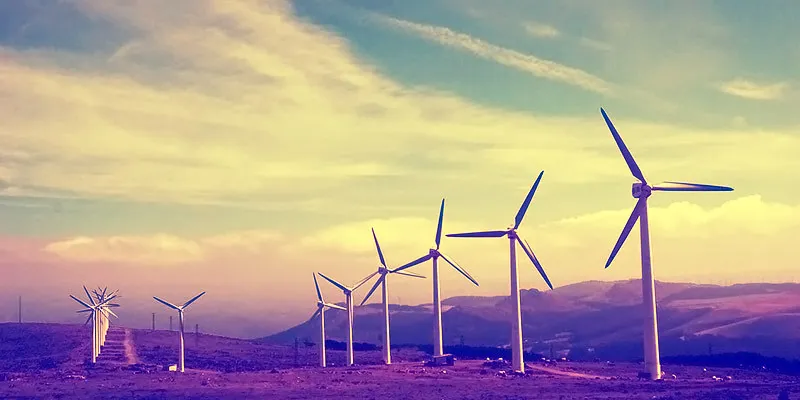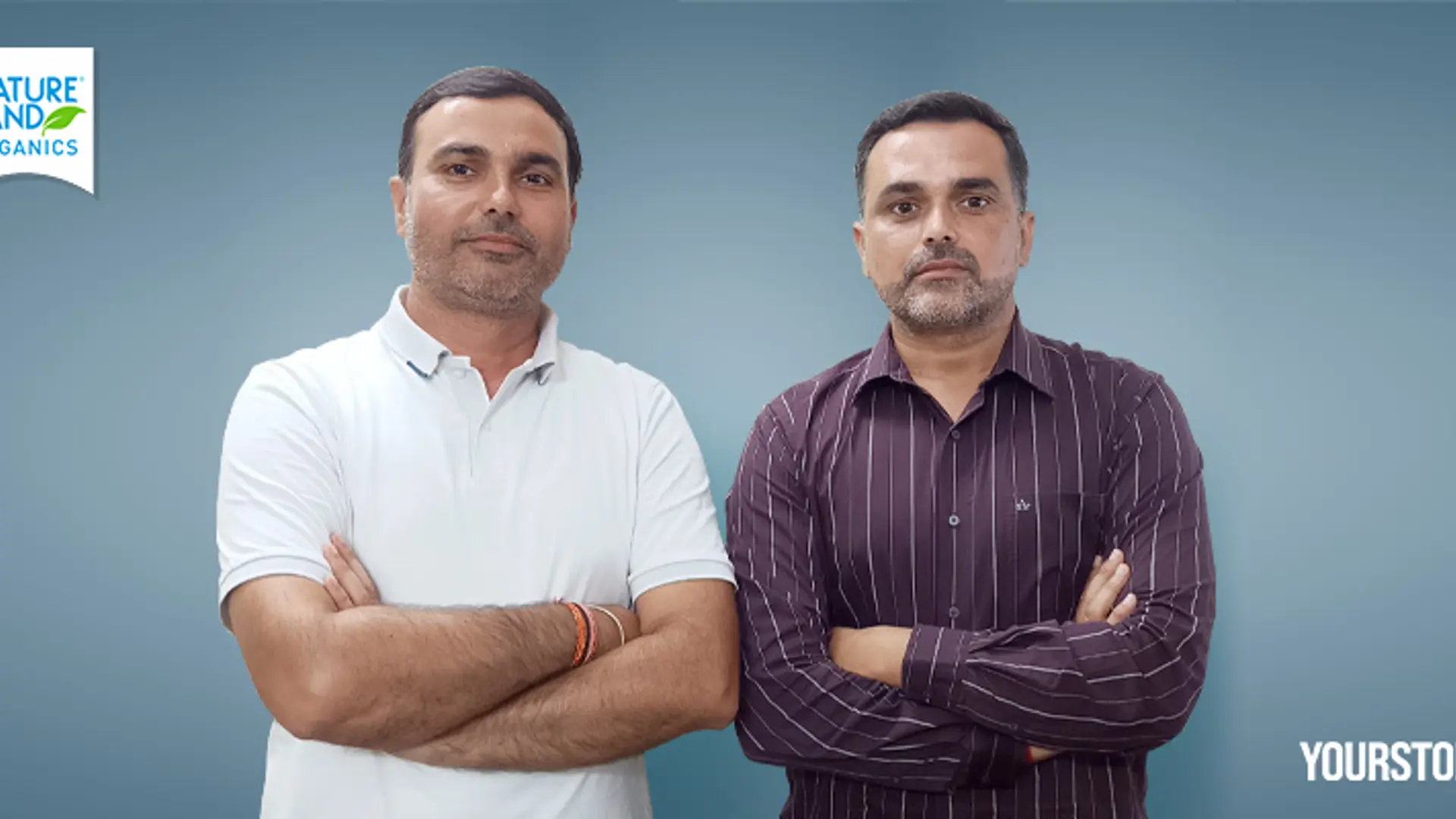Windmills to solar plants: Algo Engines, a big data startup betting on renewal energy
In the years 2012-13, investments in Big Data companies within India and abroad regularly made headlines. Though investments are still happening, Big Data no longer seems to be the flavour of the season. Many Big Data companies are in the business of capturing, analyzing and drawing inference of data for customer insights. But as Algo Engine is now demonstrating, there is a big space of non-human data that offers a lot of intelligence, which can be used for the benefit and progress of business.
About the startup
Mumbai-based Algo Engines (AE) looks at providing operational intelligence for wind turbines, solar plants, Met masts and other IoT related information. In other words, Algo Engines collects data from sensors situated on wind turbines/solar plates; analyzes it and provides intelligence on the production capacity, future capacity and health of these machines.

Founded by Satish Kashyap and Pallavi Narvekar, Algo Engines is the first company in India to look at data analytics in the renewal energy space. With more than 14 years of experience, Satish understands the renewal energy space very well. He has also co-founded General Carbon, Asia’s largest carbon credit advisory.Pallavi is a technical expert, with over 18 years of experience in building real time systems that have handled over one million messages at the National Stock Exchange. Besides the founders, Algo Engines has four more members in the fields of design, business development and product development.
Algo Engines was conceptualized in October 2012, after the founders did a detailed study of the opportunities in space and what they actually wanted to do. A year later, in December 2013, they had their MVP ready and also acquired their first customer – GE. Today AE helps GE understand the behaviour of their 1.5 MW turbine, and do a lot of predictive maintenance. “We have been able to make good progress in a short period of time, mainly because of the contacts that Satish has in the industry. He was already working with many companies on power contracting and when he went back to them with data analytic,he was able to convince them and get them onboard,” shares Varun Deshpande, head of business development at AE.
Space they play in
Although renewal energy is new to the world, globally there is an installed capacity of 320 giga watts(GW) and India has an installed capacity of 22 GW. AE has started in India and has plans to enter the European market soon.

AE works with wind farm owners or independent power producers (IPP). These IPPs have already installed wind farms and supply power to utility companies like the State Electricity Board. AE is only targeting wind farm owners at this point. Besides doing data analysis, they can also provide IPPs with technical expertise needed to manage the wind farms. “Generally IPPs will outsource the operational part of the wind farm to someone else. So we can both directly work with the IPP to manage their wind farms as well as mine and analyse data for them. We also work with the outsourced service provider of the wind farm for data analysis purpose and sell him our solution as a value-add on,” explains Varun.
In the market today, there are some companies who are actively generating renewable energy for consumption, and then there are others who have invested in the space for availing tax benefits – both these customers are being targeted by AE.
AE competes against heavyweights like IBM, Siemens, GE, etc who also have business intelligence software that mines renewal energy data. However, rather than compete with the big names, AE is looking at people who cannot afford the big names. The product that AE sells does three things in one – business reporting, real-time reporting and data analytics.
The product

AE customers are charged an upfront fee and then a MW per month charge. Customers have the option of choosing from three different product products that AE has to offer. AE charges Rs 2,000 per MW per month to its customers. Theirs is a SaaS product, which Varun says is platform agnostic, and can works equally well even with MS Azure or IBM Bluemix. Customers have a simple dashboard that sits on their computer, which shows all the data that is being collected by the numerous sensors fitted on each wind turbine.
When IPPs set up their turbines, they get a system called SQADA which is a supervisory control and data acquisition system that collects wind data. The data thus collected has always been stored on the system, but never been looked closely to mine intelligence – and that is what AE hopes to change. “We realized people are not mining data, there is tremendous amount of data coming in. Each turbine has about 200 sensors on it and each sensor is a different data point – there are temperature sensors, vibration sensors, power, voltage, blade angle, speed, wind speed, wind angle, humidity, pressure, etc – all sorts of data points. These sensors generate lot of data, which is refreshed every 13 milli-second, i.e. 2000 data points per minute,” explains Varun.
Companies like ABB which setup wind turbines, give the IPPs a basic reporting tool that can tell how much electricity was generated last month, what is the current generation capacity – simple capacity generation information only. However with the AE software, IPPs would be able to look beyond just capacity data, IPPs can pin point the place where problems may have occurred, which turbines are under-performing, which are over-performing, how much are turbines under-performing by – and so on. “The data gives you information about the turbines health, tells you trends and you can do predictive maintenance. So if a turbine’s gear box is going to fail, there is a certain way it will behave. It’s temperature will raise in a particular way, the vibrations will be another way, so if you know that in advance you can send your maintenance team to fix it. But if you didn’t know this, then the gear box can fail, turbines would have down time and IPPs would have to do reactive maintenance. There is loss of time and revenue in such reactive maintenance,” explains Varun.
What next?

Todate AE has been bootstrapped, and they are looking for strategic investors. They mostly rely on B2B marketing, as well as social media and digital marketing for customer acquisition. There is also a renewal energy council, and anyone who wants to be an IPP has to register there – this is also a mode of reaching out to prospects, explains Varun.At a recent Weekend Ventures hosted competition, AE won the first prize, which has given them access to Google Mentorship program and credits worth $25,000 for MS Azure, AWS or Google Business Apps. The present plan is to capture the Indian market entirely, while simultaneously tapping Europe. However amidst all the good news, the biggest hurdle AE is facing is to make the IPPs see and realise the value of data. “The IT team of the IPP is not willing to believe that data can help value-add to their business. Proving the value of data to this sector is a big challenge,” admits Varun.








